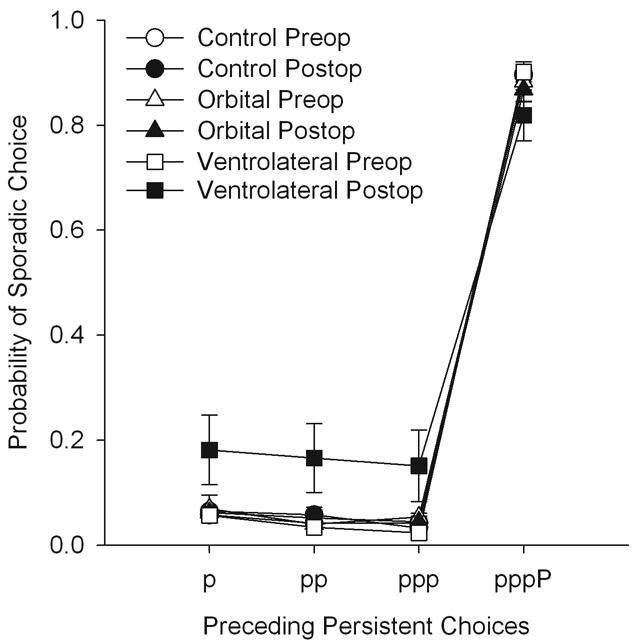Figure 6.

Probability of a sporadic choice after one, two, three, or four persistent choices in control, VLPFC, and orbital groups. Preoperatively in all groups, and postoperatively in control monkeys and monkeys with orbital prefrontal lesions, the probability of a sporadic choice after one, two, or three persistent choices is extremely low, and it is very high after four consecutive persistent choices. This is consistent with correct and efficient application of the behavioral strategies associated with the different categories of objects. Postoperatively in the VLPFC group, the probability of making an inappropriate sporadic response after fewer than four persistent responses is increased, but the probability of making an appropriate sporadic response after four persistent responses is reduced. Thus, they are impaired in the overall implementation of behavioral strategies, and are not simply more likely to commit an impulsive sporadic response overall.
